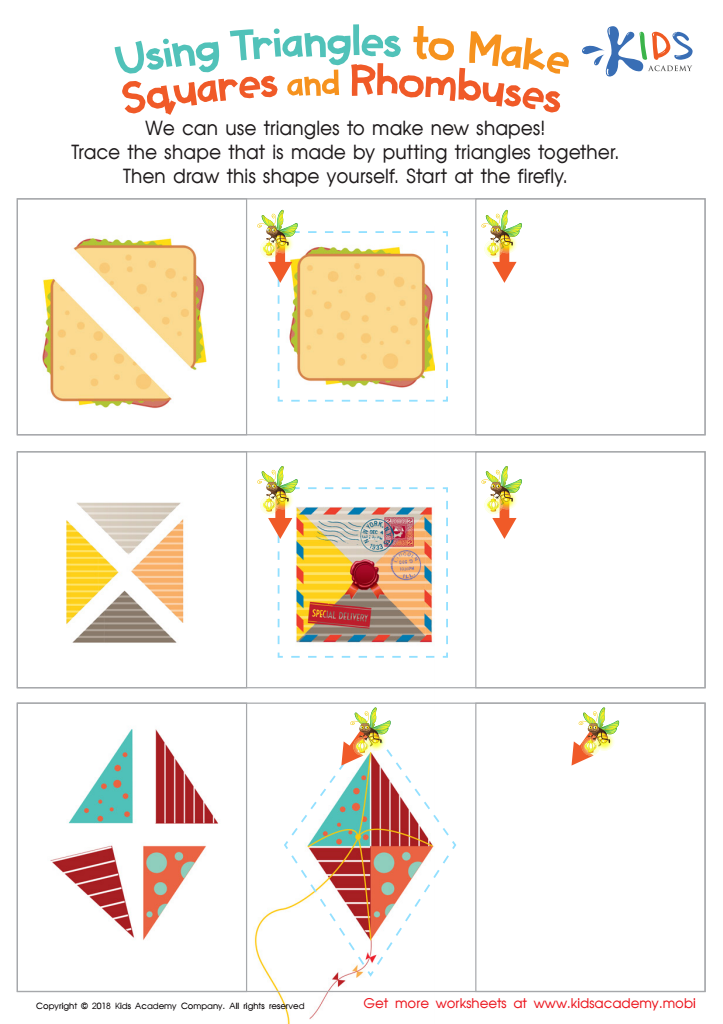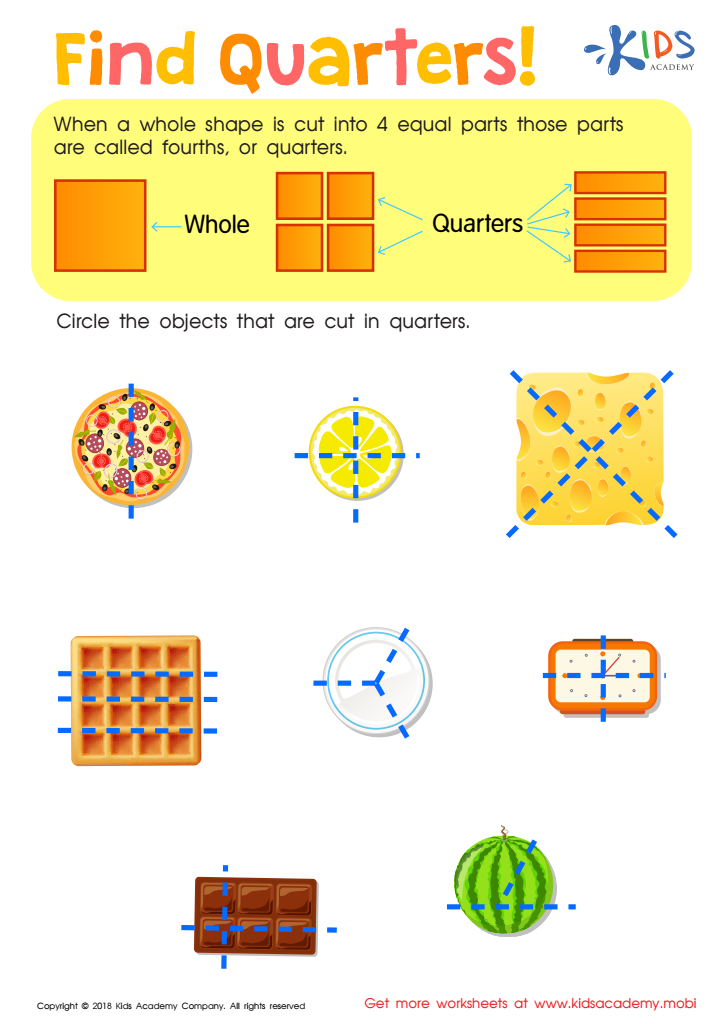Counting practice Normal Geometry Worksheets for Ages 3-7
3 filtered results
-
From - To
Introduce your child to the world of numbers and shapes with our Counting Practice Normal Geometry Worksheets for Ages 3-7. Designed to support early learners’ math development, these engaging worksheets combine counting exercises with basic geometric concepts. Children will delight in tracing shapes, identifying patterns, and counting objects, all while strengthening their foundational math skills. Perfect for preschool and kindergarten, these worksheets are ideal for home practice or classroom activities. Start your little one on a path to numerical confidence and geometric understanding. Explore fun, educational resources at Kids Academy today!


Let's Count Faces! Worksheet


Using Triangles to Make Squares and Rhombuses Worksheet


Find Quarters Worksheet
Counting practice and an introduction to basic geometry are foundational for the cognitive and mathematical development of children between the ages of 3 and 7. These early years are critical for building a strong foundation in numeracy and spatial awareness, essential skills that facilitate future academic success and everyday problem-solving abilities.
Counting helps young children understand numerical relationships and the concept of quantity, which are pivotal for more advanced mathematical concepts like addition, subtraction, and beyond. Engaging in regular counting exercises develops a child's ability to recognize patterns, enhances memory, and promotes logical thinking. This practice also teaches kids to sequence numbers correctly, an essential precursor to later mathematical reasoning.
Introducing basic geometry at this age nurtures an understanding of shapes, sizes, dimensions, and spatial relationships. Recognizing and describing geometric shapes strengthens visual perception skills and spatial reasoning, which are critical for tasks such as puzzle solving, understanding maps, and even reading. For instance, identifying shapes helps children recognize letters and numerals, fostering literacy alongside numeracy.
Moreover, integrating these skills through play-based activities or everyday routines makes learning enjoyable and relevant for children, engaging their curiosity and setting a positive attitude towards learning. Thus, both parents and teachers should prioritize counting practice and basic geometry to support a child's holistic and long-term academic growth.
 Assign to My Students
Assign to My Students















